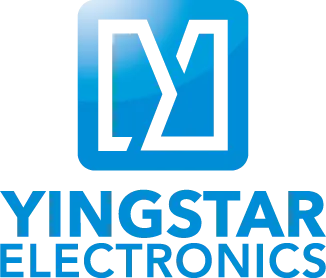PCB Fabrication FAQ
Home » PCB Fabrication FAQ
We have selected the most frequently asked questions about PCB Fabrication from our customers. This database will be continuously updated to reflect the most frequent questions our clients have at any given moment, so please do not hesitate to Contact Us if you have a query that is not covered below.
THICKNESS OF LAMINATES

1.What is your typical laminate thickness?
Our normal thickness of laminate is 1.6 mm (0.063"), 0.8 mm (0.032"), 1.0 mm (0.04"), and 1.2mm (0.047"), they share same price for same PCB design.

2.What other options for laminate thickness do I have?
Additionally, we can build your boards with the following non-standard laminate thicknesses: 0.2mm (0.0079"), 0.4mm (0.016"), 0.6mm (0.024"), 2.0mm (0.079"), and 2.3mm (0.128"). (0.091"). Their price will be a little more expensive than the normal laminate thickness.

3.Are you able to manufacture with High Frequency PCB Materials, such as Rogers, etc.?
Yes, although such materials are more expensive than FR-4-type standard material. Please contact us for further price information.

4.Can you tell me more about your laminates physical properties?
Yes, please review the information provided below.
Brand of laminate: CC-5400
CKC Taiwan Manufacturer
ANSI grade: FR-4
0.5 mm , 0.8 mm, 1.0 mm, 1.2mm, 1.5 mm
Copper thickness 18 microns (1/2 ounce) or 35 microns (1 oz)
Operating temperature Tg > 130 C
Soldering 40 seconds at 260C/500F, 20 seconds at 290C/554F.
Dielectric constant 1Mhz: 4.0 - 4.5, with a guarantee of less than 5
Dissipation factor 1MHz: 0.02-0.03, guaranteed < 0.03
Volume resistivity: Ohm.cm > 5*10^14
UL 94V-0, UL746 CTI 100
COPPER THICKNESS

1.What thickness options do I have for copper?
We can offer 0.5 oz, 1.0 oz, 1.5 oz, 2.0 oz, 2.5 oz, 3.0 oz, and Heavy Copper PCB options at 3.5 oz, 4.0 oz, 4.5 oz, and 5.0 oz.
FILE FORMATS

1. What kind of file format can you accept?
We can process Gerber RS-274X and ODB++ files.
PCB SURFACE FINISH

1. What surface finish can you offer?
HASL, Immersion Gold, Immersion Tin, Immersion Silver, OSP, Hard Gold, and Soft Gold, and more.
ORDERING

1.Are my PCB Design Files secure when I submit them for fabrication?
We will never manufacture PCBs for someone else using your files unless you give us express permission to do so, nor will we distribute your files with any other third parties. For added security, we can sign a non-disclosure agreement at your request.

2, Are Prototype PCBs and Small Volume PCB Production Orders Handled?
Yes, we can produce PCBs in any quantity.
PRICES

1.Can my price be negotiated?
Even if our prices are extremely cheap, you can still negotiate with us to fulfill your cost-reduction goals, as the market demands.

2.What are the Cost-Determining Factors for PCBs?
The following list shows the key factors:
1.The PCB's quantity and size.
2.The layer count
3.Effective Panelization - Some board sizes and shapes can offer up to 80% Usable Panel Area, with very few "dead spaces," while others can offer as little as 50%. This would have an effect on your price.
4.Number of holes bored into the boards with modern NC drilling machines. These equipment are fairly expensive, and machine time is also costly, so fewer holes result in less drilling time and a cheaper cost.
5.Number of Hole Sizes - the tool swap is the slowest procedure in drilling. Typically, boards are drilled at speeds between 60 and 80.000 RPM. In order to change the tool, the machine must stop the spindle, thus we must wait for the tool to stop revolving. Once the drill operation has ceased, the machine must proceed to the drilling rack, replace the old tool with a new one, drive the spindle again, and wait for the RPM value to reach the value specified for the new tool. Each tool change requires roughly the same amount of time as drilling 100 to 200 holes. As much as feasible, attempt to reduce the quantity of drill instruments. If the adjustment will pass your tolerance requirements, it is recommended to standardize any holes with diameter variances of a few mils.
6.PCB Laminate Material - If you intend to manufacture your board in large quantities, the appropriate choice for the board's laminate can save you a significant amount of money. Despite the improved properties of FR-4, for example, all consumer electronics are still built with FR-2 laminates since they are two times less expensive than FR-4.
7.Requirements for Trace Width and Part Spacing - these features are closely related to the production yield. If your traces are sufficiently wide (>20 mils), for example, the board can be created with a single silkscreen printing operation using etch resist instead of dry film lamination, exposure, and development.
8.Special board requirements, Controlled Impedances, Via in Pad, Blind / Buried Vias, Microvias, etc. influence manufacturing yield.


